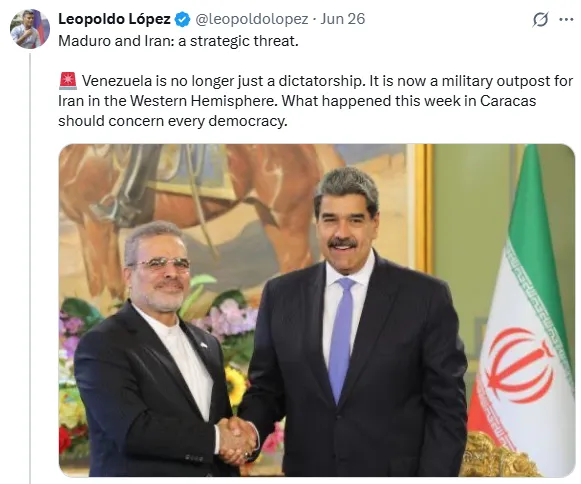Roger Boyd
Jul 26, 2025

“Plus ça change, plus c'est la même chose”, the more it changes, the more it remains the same. Or “back to the 1880s!” The New Deal era was the exception for the US, not the rule.
All the profiteers eating at the trough of US state corruption will certainly have celebrated the hugely increased budget for the massive trough of corruption known as Homeland Security; from an already monstrous US$65.1 billion to US$107.4 billion. Who will profit from this? People like Canadian billionaire Stephan Cretier, CEO of GardaWorld that is staffing Alligator Alcatraz as he comfortably resides in his offshore tax haven of Dubai. He considers it to be “monumental, the wealth creation that’s being done”, yes wealth creation through the corrupt picking of the government’s pockets while implementing the increasingly authoritarian state. As Maureen Tkacik notes:
Some of the contractors involved in Alligator Alcatraz have their roots in security: Crétier launched GardaWorld with a handful of friends from Montreal law enforcement. Others, like Miami’s CDR Maguire, Toronto’s Access Restoration Services (ARS), and Galveston, Texas’s SLSCO got their starts in disaster response, then moved into more punitive industries. But for most companies in the emergency response business these days, the distinctions between providing emergency assistance and intimidating/terrorizing the victims of said emergency have blurred.
From FEMA to Alligator Alcatraz, is there really that much difference? The CDR group of companies have been at this for many years, and Tkacik shows us how the sausage is made:
CDR group of companies, whose founder Carlos Duart and his wife, both second-generation Cuban Americans affiliated with ardently free-market think tanks, have given nearly $2 million to campaign slush funds supporting Gov. Ron DeSantis and other Florida Republicans and are regulars at charity balls and society events of that nature. CDR is an outgrowth of Duart’s eponymous Miami construction company that diversified into federal project management after the real estate crash of the early Obama years. During the pandemic, it administered tens of thousands of vaccines, and nowadays its most booming business seems to be disaster relief, but it also has a division that provides health care to prisons in three states, which is the one that nabbed the contract at Alligator Alcatraz.
To say that such companies are run by “shady individuals’ and that they do not excel in competence is but an understatement. GardaWorld was in severe difficulties due to its utter lack of ability to run the armoured cash transport business; which included getting four of its bodyguards killed in Iraq, repeatedly losing customers’ money, and hiring novice drivers who notched up about 100 collisions a month in badly maintained vehicles.
In response, the company moved its headquarters to Florida and ingratiated itself with then Governor Rick Scott and the possible criminal charges “went away” as they say. The Alligator Alcatraz contractors have close links with the current governor, Ron DeSantis.
[youtube]http://www.youtube.com/watch?v=ZVKISxNqf8I[/youtube]
It has been predicted that the emergency response and homeland “security” trough of corrupt extraction may be a US$1 trillion sector of the US economy by 2030; all counted toward GDP rather than as the rentier graft that it is. With the profits squirrelled away in offshore and onshore (e.g. Delaware) tax havens, safe and sound from the tax men of which quite a few have been let go.
With respect to Alligator Alcatraz, it looks like Florida state pockets as well as federal level pockets are being extensively picked. US$600 million and counting!
War spending of course leapt to a cool US$1 trillion a year, more “wealth creation” for the big “defence contractors” of Lockheed Martin (aerospace, space), Raytheon (missiles and sensors), Northrop Grumman (aerospace), General Dynamics (combat vehicles, shipbuilding, IT), Boeing (aerospace), L3Harris (communications), HII (shipbuilding), Leidos (IT), Booz Allen Hamilton (consulting) and Amentum (logistics etc.); an incredibly concentrated set of suppliers with Lockheed Martin easily the biggest. There is no real “competitive” bidding in such an arrangement, especially when the defence contractors are legally able to intervene directly in US politics, and there is a revolving door between the state and the contractors. For example, in fighter jets there are exactly two contractors. Lockheed Martin got the F35 boondoggle, so now Boeing gets the F47 boondoggle. In 2001 Lockheed Martin stated that the F35 would be in service by 2008 with a program cost of US$200 million, while “almost a quarter century later, acquisition costs have doubled, the total program price is nudging $2 trillion, and engineers are still struggling to make the thing work properly.” As Cockburn notes:
If and when it finally comes to be written decades from now, an honest history of the F-47 “fighter” recently unveiled by President Trump will doubtless have much to say about the heroic lobbying campaign that garnered the $20 billion development contract for Boeing, the corporation that has become a byword for program disasters (see the KC-46 tanker, the Starliner spacecraft, the 737 MAX airliner, not to mention the T-7 trainer.)
Just like the Homeland Security contractors, the MIC contractors seem immune to repeated failures, cost and time overruns, over billing, and corruption scandals.
As the US never really fights wars against peer competitors, their output is hardly ever properly market tested. In the Russo-Ukraine and India-Pakistan wars, and the repeated attempts to subjugate Ansar Allah in Yemen, their wares have not been shown in a good light to put it mildly. An example of the US MIC incompetence and profiteering:
The US Navy’s next-gen DDG(X) destroyer is designed to outgun China’s rising fleet, but soaring costs, shaky tech and shipyard bottlenecks threaten to derail the program before it leaves the drawing board.
This month, the US Congressional Research Service (CRS) released a report stating that while the US Navy seeks to procure the first DDG(X) in the early 2030s and has requested US$133.5 million for research and development in FY2026, the US Congressional Budget Office (CBO) estimates each ship will cost $4.4 billion—33% more than the US Navy’s $3.3 billion projection.
However, a June 2025 Government Accountability Office (GAO) report highlighted that critical technologies—including the Integrated Power System (IPS) and hull form—remain immature and may not be fully tested before the ship enters detailed design.
That’s raising red flags about cost and schedule—further compounded by August 2024 updates to operational requirements made to accommodate faster speeds and higher electrical loads, with no updated timelines or cost estimates provided.
Lawmakers must weigh whether DDG(X)’s ambitious design justifies its cost and whether the US Navy is doing enough to manage risks as it transitions from existing destroyer programs.
Another way-over-budget, way-over-schedule, underperforming boondoggle in the making. The new Chinese Type 055 destroyer, with eight already in service, that the DDG(X) is supposed to combat has been estimated to cost about US$900 million to build. Given the usual history of US defence contracting, the DDG(X) will be well over US$5 billion by the time it arrives. In the interim, the ageing Arleigh Burke class destroyers (1988-2011 and 2013-; 74 active & 4 fitting out/launched) and Ticonderoga (1980-1994; 9 active) class cruisers keep serving way past their scrap by date. The fiasco of the US$9 billion a piece Zumwalt class lead to a restart of Arleigh Burke production in 2013 with the first “Flight III” ship being delivered in 2021.
Ships designed, and in many cases built, in the 1980s being kept in service because of the failure of Zumwalt and the delays in DDG(X); with the latter quite possibly becoming another Zumwalt. A story that is repeated in so many areas of the US Military Industrial Complex, where cost overruns and delays produce more profits rather than consequences.
Apart from small increases in Veteran’s Affairs (which should really be treated as part of the War spending) and Transportation, every other cabinet department was cut; Commerce, Treasury, Justice, Labour, Energy, Agriculture, Interior, Education, Health & Human Services, Housing & Urban Development, and State & International Programs. All so old and new tax cuts for the rich and corporations could be funded, together with the expansion of the War and Homeland Security oligarch rentier extractive troughs. There were even a few juicy details hidden away, such as an extended tax giveaway that allows venture capitalist to avoid colossal amounts of capital gains. And of course the “carried interest” scam so beloved of the private equity crowd survived.
And next up for the oligarch extraction game? Opening up people’s 401(k)s to the private equity vultures. Since that “soiled dress” stopped Clinton and Gingrich from handing over a big chunk of the US Social Security (pension) funds to the banksters from which they could extract colossal amounts in fees, that extraction game has not been attempted again. But I would not put anything beyond a US oligarchy that has become so brazen in sucking up the wealth of the people.
https://rogerboyd.substack.com/p/wealth ... finest-the










